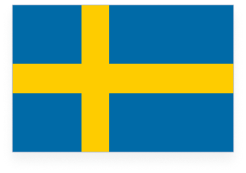Stockholm is home to the music group ABBA, the Nobel Prize ceremony, and IKEA.
Central Stockholm, the capital city, is known for being one of the most livable and walkable areas in Northern Europe, especially for young travelers looking to go on a teen tour. The city’s streets lined with wooden houses, museums, and Viking history make it feel like an open-air museum.
Here are some key facts about Stockholm:
| Key Facts About Stockholm | Details |
| Population | 1,737,760 |
| Area | 147 sq mi (381 sq km) |
| Nickname | “Venice of the North” |
| Year Founded | 1252 |
Let’s get into these 8 fun facts about Stockholm!
8 Fun Facts About Stockholm

- Start with Kungsträdgården, the “King’s Garden” in Stockholm
- You can go to an ABBA Museum
- The world’s longest art gallery is underground in Stockholm
- Stockholm city is built on 14 islands
- Stockholm has three UNESCO World Heritage sites
- Stockholm is home to the Nobel Prize
- The Stockholm Archipelago has unique valley landscapes
- Kungsträdgården hosts year-round events, from winter ice rinks to summer concerts
But first, let’s start with a history lesson.
Quick history of Stockholm
Stockholm began as a trading post during the Viking Age and grew into a strategic settlement. In early 1520, Sten Sture the Younger, Sweden’s regent under Danish rule, led opposition forces against the Danes but was mortally wounded in battle at Lake Åsunden.
When Danish King Christian II entered Stockholm later that year, he was crowned King of Sweden after promising amnesty to his opponents. However, he ordered the execution of around 80-90 Swedish nobles and clergy in Stockholm’s main square. This act was known as the Stockholm Bloodbath and ignited widespread outrage across Sweden.
Gustav Vasa emerged to lead the rebellion, uniting Swedes against Danish rule. By June 1523, his forces had driven out the Danes and he was elected King of Sweden at Strängnäs, marking Sweden’s independence from the Kalmar Union.
His name lives on in Stockholm’s famous Vasa Museum, the museum that houses and is named for a warship built by his descendants.
1. Start with Kungsträdgården, the “King’s Garden” in Stockholm
Kungsträdgården is a central park and one of Stockholm’s most popular gathering spots. Also known as the Kings Garden, it is open year-round and hosts a winter ice rink and summer open-air concerts. The park is surrounded by cafes, art galleries and restaurants.
People coming together in Kungsträdgården.
During my summer visit to Stockholm, I spent my weekends in Kungsträdgården and loved the vibes. The park was lit, with people playing Kubb and soaking up the sun while live music filled the air. I highly recommend visiting.
Tip: In spring, the park transforms into a cherry blossom paradise, giving you all the feels of being in Japan.


